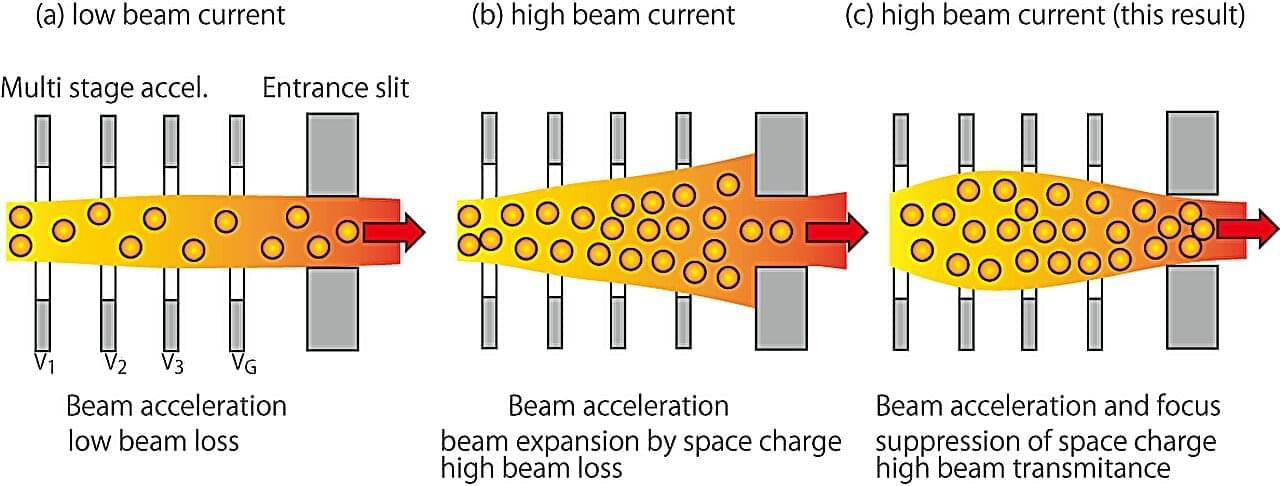Nuclear fusion, which operates on the same principle that powers the sun, is expected to become a sustainable energy source for the future. To achieve fusion power generation, it is essential to confine plasma at temperatures exceeding one hundred million degrees using a magnetic field and to maintain this high-energy state stably.
A key factor in accomplishing this is the electric potential inside the plasma. This potential governs the transport of particles and energy within the plasma and plays a crucial role in establishing a state in which energy is effectively confined and prevented from escaping. Therefore, accurately measuring the internal plasma potential is essential for improving the performance of future fusion reactors.
A non-contact diagnostic technique called the heavy ion beam probe (HIBP) is used to measure plasma potential directly. In this method, negatively charged gold ions (Au⁻) are accelerated and injected into the plasma.









